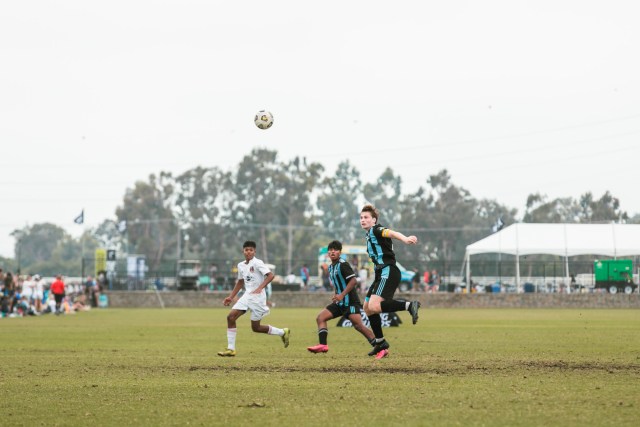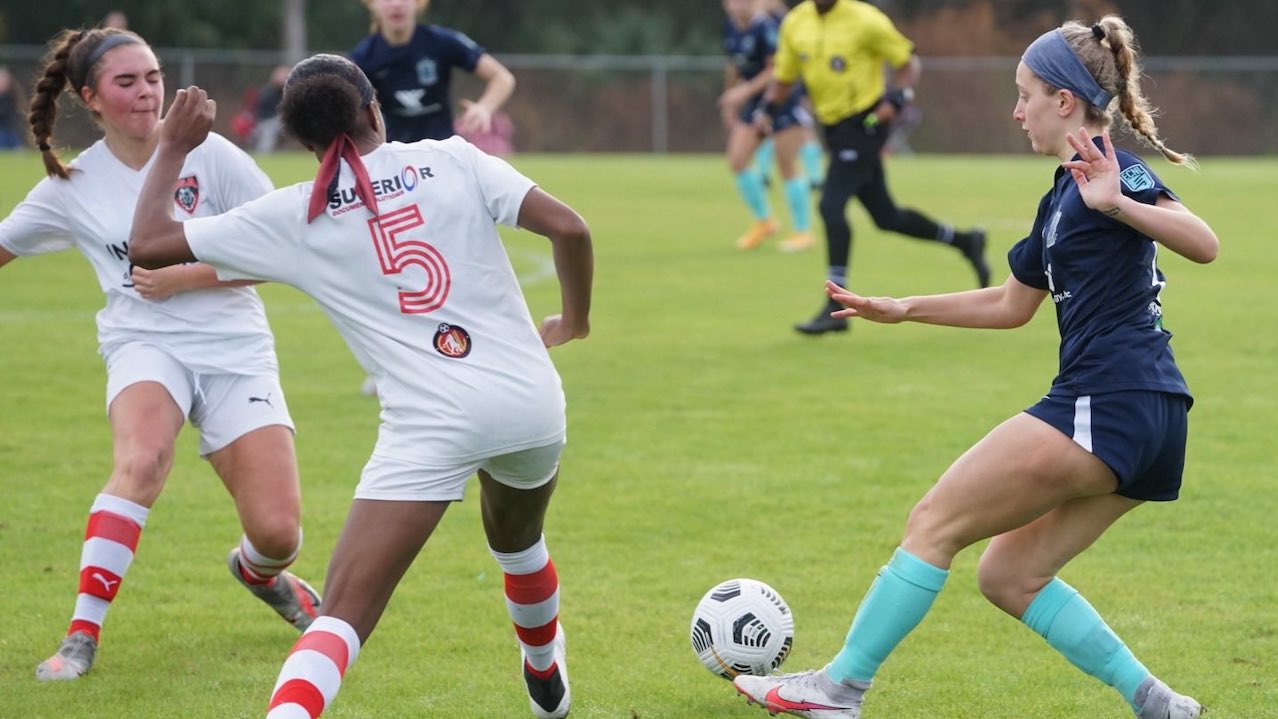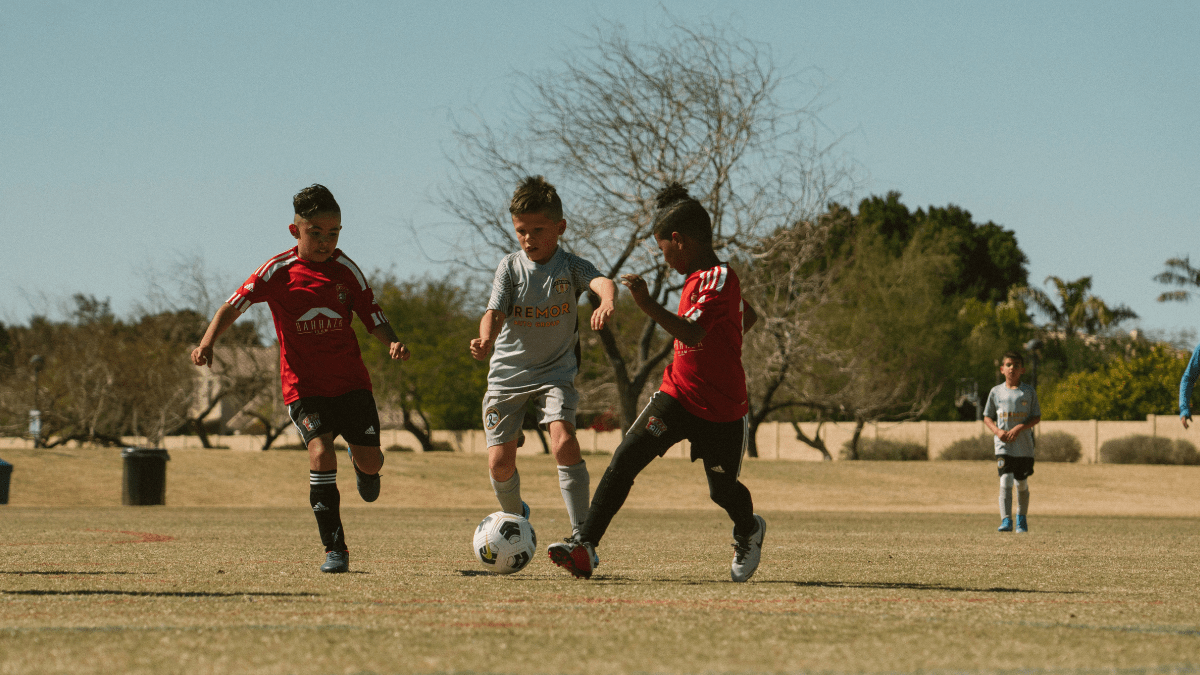

Don’t ask me why, but nothing in soccer (and arguably life) is quite so satisfying as scoring a thumping header or thunderous volley. There’s just something pure about watching the ball fly into the net before it ever touches the ground.
Finishing, however, is one of the hardest skills in the game, requiring tremendous technique and concentration. It also depends on inch-perfect crosses from teammates, which can make it difficult to practice and perfect.
But not anymore. Use this fun session’s competitive soccer finishing drills to help your team score goals from crosses and cultivate composure under pressure.
Crossing and Finishing Warmup
Pulled hamstrings, strained neck muscles and stubbed toes: I’ve seen them all, and suffered from more than I’d like to admit. But those experiences have taught me just how important it is to warm up properly, with dynamic movements that slowly ramp up in intensity
Once players are feeling loose and limber, you can introduce the day’s topic: crossing and finishing. To improve, players need lots of repetitions. And I mean lots. Start simple, with a dynamic soccer finishing drill that gives each player tons of low-stakes opportunities to fine-tune their finishing touch. It also offers players a chance to practice delivering and attacking crosses from a variety of angles and areas.
Divide players into four lines: two at the edge of the penalty area, even with the goalposts, and two on the end-line, between the six-yard box and the penalty area. Wide players drive a ball on the ground and across the face of goal, to a teammate darting forward to attack. Players follow their action: wide players move centrally, and players cross the ball after shooting. Action should be constant, and players attacking the goal must be explosive in their movement.
After several minutes, move the wide players’ starting position to the perimeter of the penalty area, even with the six-yard box. Crosses should now vary in speed, height and placement. This encourages players to focus and use their head (and feet!) to adapt to unpredictable deliveries.
Finally, move the crossing lines wider, to the touchline and even with the edge of the penalty area. These are game-realistic (though uncontested) crosses, so players should be on the move, taking a touch down the line before sending in a ball for their teammate to attack. With more variety in the quality and placement of these deliveries, attackers have to be more creative and precise in their movement — and more focused on making the proper contact with the ball.
Crossing and Finishing Drills

Passing Patterns
There are a number of drills to help teams become lethal at attacking crosses. A very simple one divides players into two teams with identical formations. Coaches assign a set passing pattern, which ends with a cross delivered into a box. The two teams take turns executing the pattern, and earn points for scoring goals. Coaches can add restrictions (one-touch finishes, headers only, time limits), or simply emphasize the importance of making varied attacking runs. For example: one striker attacks the near post, another lurks at the back post, while a midfielder arrives late at the penalty spot.
Crossing and Finishing Competition
A similar drill introduces defensive pressure and promises increased repetitions for attacking movements, crossing and finishing. Teams are divided into two teams of nine — a goalkeeper, two wingers, two defenders, and four attackers. The two teams take turns attacking: wingers dribble at a cone, perform a move down the line and ping a ball into the box. Their teammates attack the ball, while the two defenders attempt to clear it away. Teams earn points for scoring, and race to a set number of points before rotating roles. To add pressure on the crosser, the opposing team’s winger can defend them in a 1v1 situation.
Flying Changes
Another fun possibility is a variation of the popular Flying Changes game, a fast-paced goalscoring extravaganza with teams attacking 3v2. In this version, however, the field is much wider, with neutral players stationed on each sideline. Goals scored from crosses count double (or coaches can add other specifications).
The Scrimmage

As always, it’s important to end the session with a scrimmage for players to put the day’s skills and lessons into practice. One approach is with a small-sided game on a wide field. This ensures tons of repetitions and goals scored. Play 5v5 on the field (plus a GK), and station a wide player from each team on each sideline. Teams can score by any means, but goals from crosses count double. To keep play flowing, any player passing to their wide teammate must make an overlapping run and take their position, while the wide player joins the main field.
Another approach is to play a full-sided scrimmage that emphasizes attacking through wide areas. Goals from crosses might count double, while headers count triple. There are tons of variations and restrictions for coaches to implement. The important thing is to boost each player’s confidence, comfort and composure by maximizing their opportunities for crossing and finishing.

